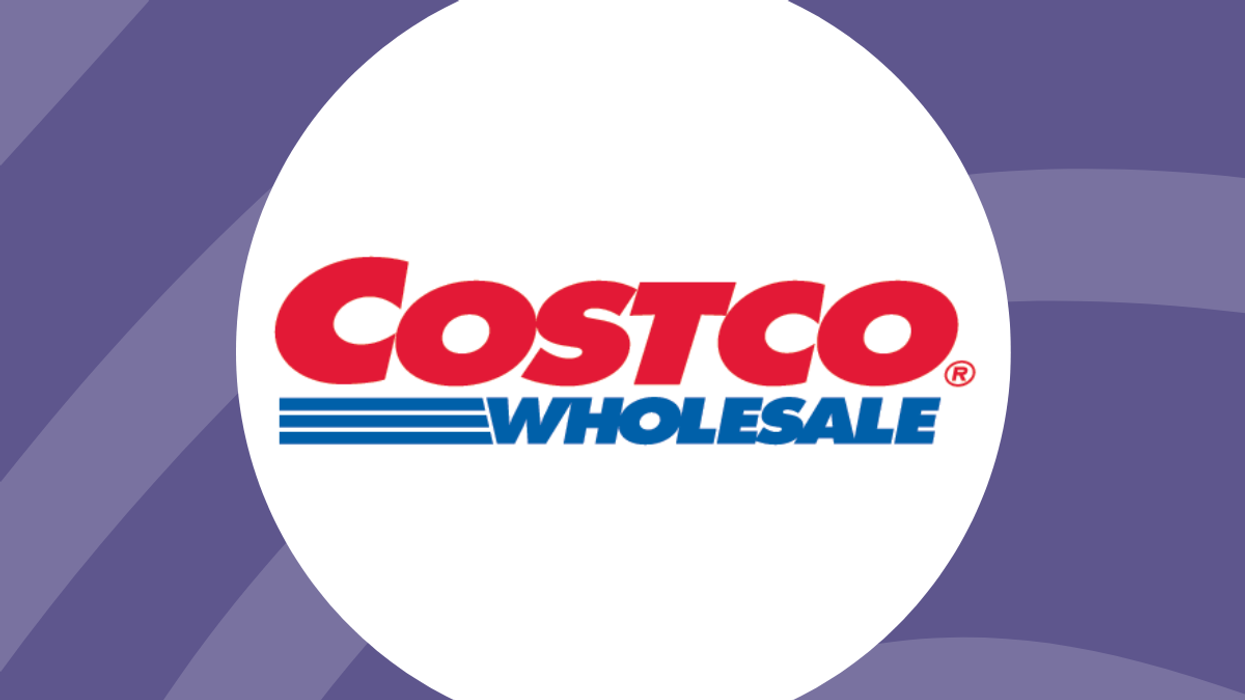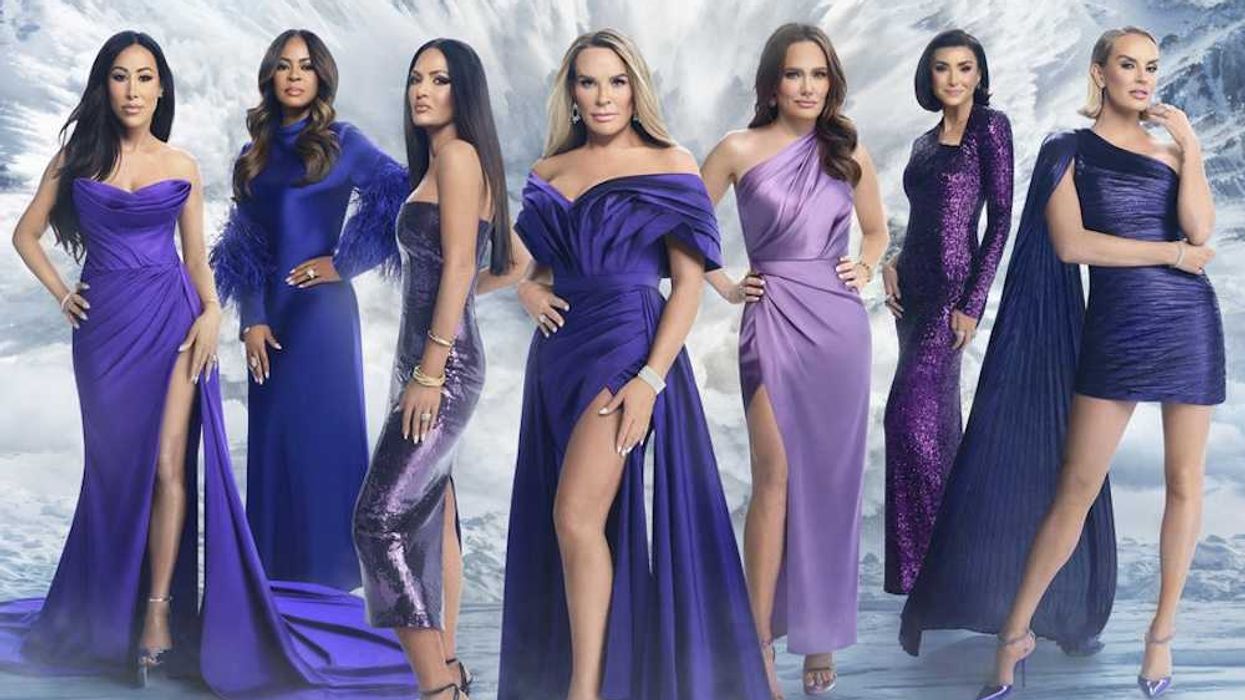Here are women leading the way every day.
7 Female Leaders Actually Helping To Make Systemic Change

In the year-plus since companies came out in support of equality and Black lives we wanted to check in on the state of diversity, equity, and inclusion (DEI): how it looks different than prior to 2020, what has made an impact so far, and how all of us can continue to be allies in the workplace and beyond, especially as many companies plan to head back to the office. Here, we chatted with everyday women leading the way and making changes, big and small, to create an equitable workplace for all.
Dr. Cindy Pace, Vice President, Global Chief Diversity & Inclusion Officer At MetLife
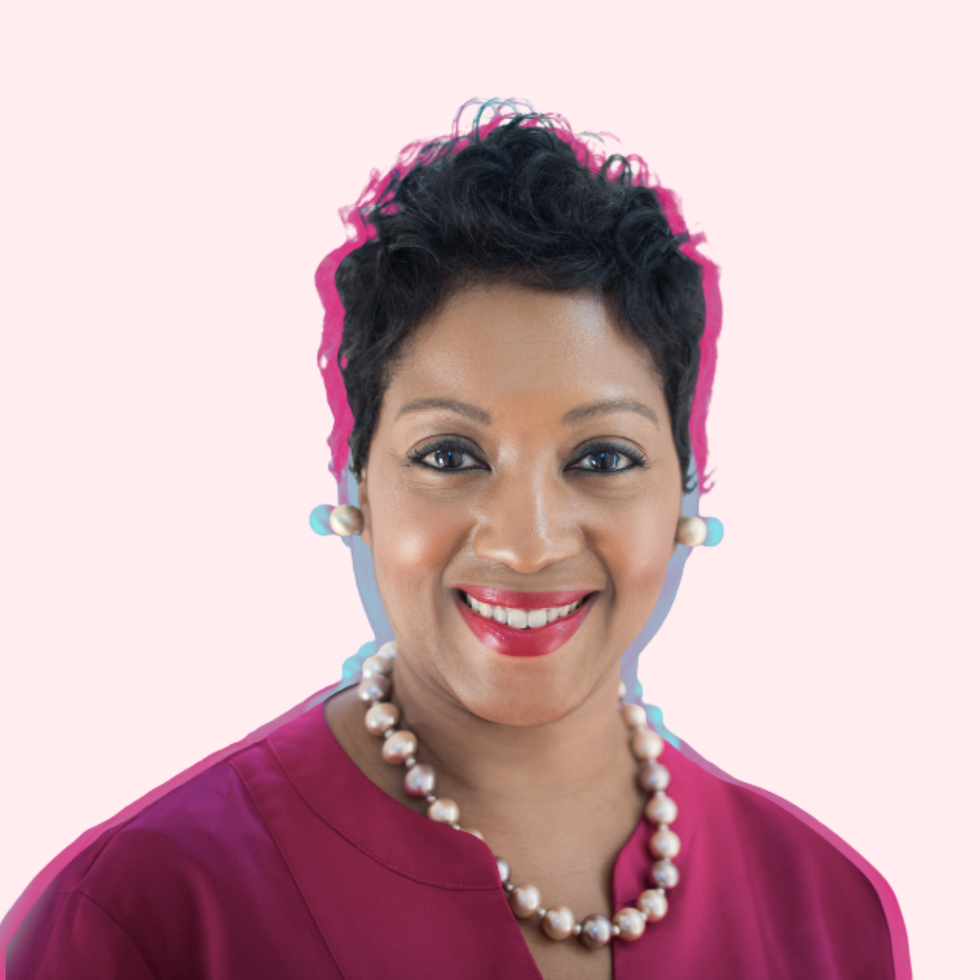
What are some best practices when it comes to making sure DEI is a priority for leaders in the workplace?
Being in diversity and inclusion at this time is different than any other time in history. What we're really doing now is collectively developing more systemic change for the future. The call for an end to discriminatory practices that might have existed in organizations, and really this collective action of employees and people leaders and executives and CEOs coming together to make systemic change happen. I think that is the next practice that we're experiencing, and definitely experiencing at MetLife. And it really requires strategic planning in terms of making sure that DEI is pulled across everything.
We're very serious about advancing women in leadership, strengthening the pipeline of women to be able to make it to the top, and in doing that it's not just about having programs. It's systemically looking and saying, "Where can we make this a better workplace for everyone? And so it happens in several ways from a cultural perspective, making sure that you actually have a culture that celebrates diversity, that recognizes the need for equity. We have a shared language at MetLife, so diversity for us means leveraging the unique attributes and perspectives that everyone brings to the table, and then inclusion is really about in every interaction is an opportunity for us to connect: for you to feel valued, to feel heard, to feel seen.
What kind of changes have you seen make the most impact?
What made developing women's career experience impactful was the sponsorship and support from managers and senior leaders in the organization. And so it's one of those things where no one gets anywhere alone, right? What we were able to do for women is to give them a foundational leadership development training that anyone would get. And part of that secret sauce is creating a space where women can learn from each other, because if you're in a workplace and you might be underrepresented, you don't actually always have the time to connect with each other, so learning from each other, creating those internal learning communities, and also pairing women with senior executives that can demystify what leadership looks like. Because sometimes you're looking above you and you have no idea what it took someone to get there, and you might find all of this is actually doable, and so that increases your aspiration and your ambition for leadership.
We have a new program called EXCELERATE, which we started during the pandemic. It was really around making sure that people with ethnic and racial diversity have access to senior leaders. All the research points to that the way to get ahead is to have the network that actually can speak on your behalf in terms of what you're able to do, and put their social capital on the table to advocate for you to get ahead.
What do you think has actually changed in the workplace since many companies made commitments to equity following the 2020 protests?
One of the best things that changed is it came into view. DEI is now on the radar as something essential for corporations to focus on and that is one of the best things that could have happened. I think the other things that organizations have done is really had a reckoning with their own histories, and looking at how they can improve workplace practices so that you have a more equitable and a more inclusive organization.
Dawn Christian, Senior Vice President Of Inclusion & Diversity At GCI Health
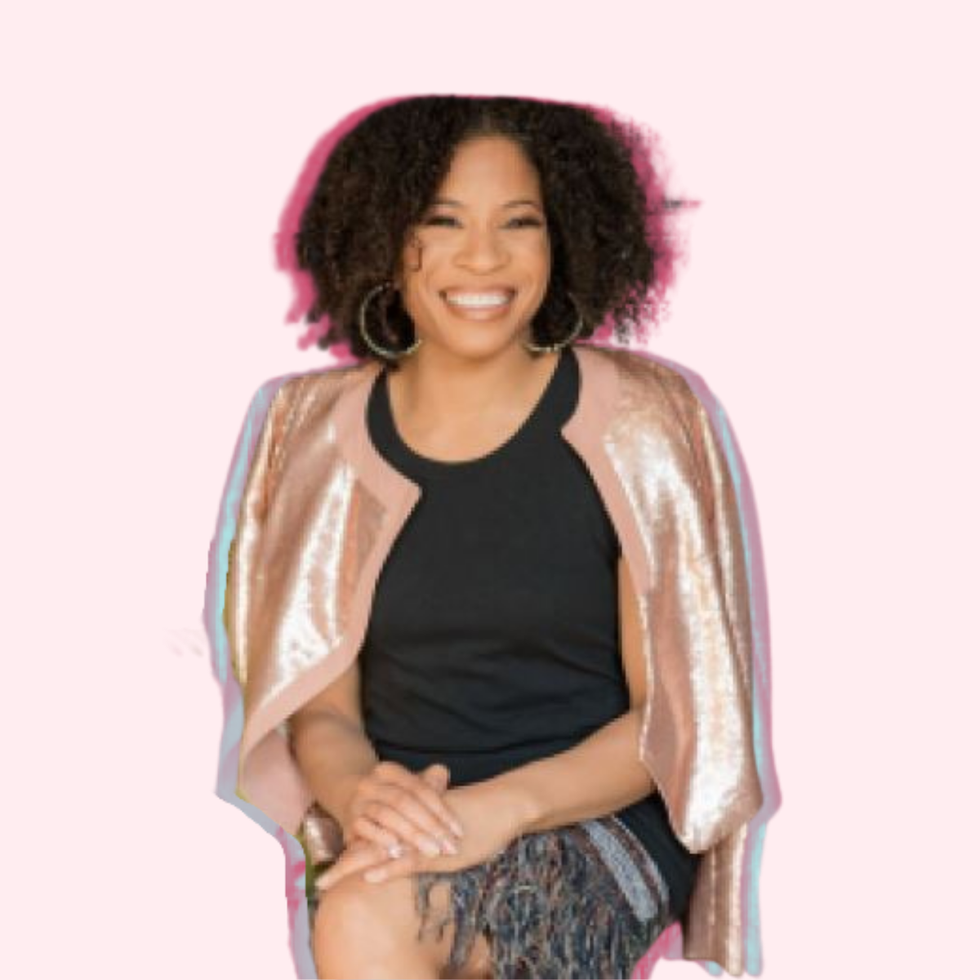
How can anyone in the workplace lead when it comes to Inclusion and Diversity?
Everyone's accountable for creating a workplace climate that is inclusive and respects diversity. We may not all have the power structure by title, but everyone can lead by influence. Workplace inclusivity is about making space and honoring differing perspectives and amplifying voices. I&D is great and necessary, but striving to create a sense of belonging is the game changer. Folks feel like they belong when they feel seen and heard. Sometimes all it takes is acknowledging that someone else is trying to make a point or hasn't had a chance to speak in a meeting. Leadership is giving honest feedback on employee surveys. Listening is leadership. Allyship is leadership. Sponsorship is leadership.
What kind of workplace changes have you seen make the most impact when it comes to I&D?
Change works best when there's accountability built into the organizational structure. This means that we cannot just advise for the best, but we must also put the systems in place to navigate change. We need to embed policies that contribute to inclusive workplace culture. Companies should prioritize, create and put equitable hiring, anti-racism, gender equity and pay equity practices and policies in place. Employee Resource Groups need to created, funded and backed by an executive sponsor with a direct communication channel to executive leadership. Every company should have specific I&D goals that are tied to compensation to drive accountability for all employees. Change is about being informed and agile. Companies should pulse their employees regularly on inclusion, belonging and diversity. We must also communicate a plan of action to address what we learn. In order to build trust and psychological safety, data should be transparent and available. Finally, we must be willing to understand what makes people go. Companies should be willing to conduct anonymized exit interviews or surveys to better understand the lived experiences of company alumni. We need to be willing to take a look at trends to inform what's working and where the opportunities lie. At the end of the day, we must listen to all voices to truly make meaningful impact
What more can be done right now, especially as more companies return to in-person work?Workplaces need to be agile and willing to flex to meet the needs of a diverse employee population. We must all realize that culture has shifted dynamically over the past 20 months. Work and home have been merged. Right now companies must respect the intersectionality that exist within each team member. It has become not only more normalized, but expected to address matters of social justice and representation openly at work. Regardless of identity markers, workplaces need to make space to talk about neurodiversity, gender identity, sexual orientation, race, ethnicity and world events. Nothing is the same. We cannot just go back to the way things where. We no longer have our work and then home versions of ourselves. One positive note about this is that we've all become more human. Employees are taking more command of culture and the ability to show up as their whole selves. In today's climate, employees are just simply past mission statements on websites. To retain and future-proof talent, companies must be able communicate their commitment and deliverables to sustain inclusion and diversity. Also, we must staff and fund our teams in order to pull-through I&D strategy. Inclusion and Diversity is a practice and it takes informed professionals to navigate the complexities. Inclusion and diversity is not a phase, but rather a matter of sustainability.Dr. Erin Wheeler, Author And Executive Director At College Beyond
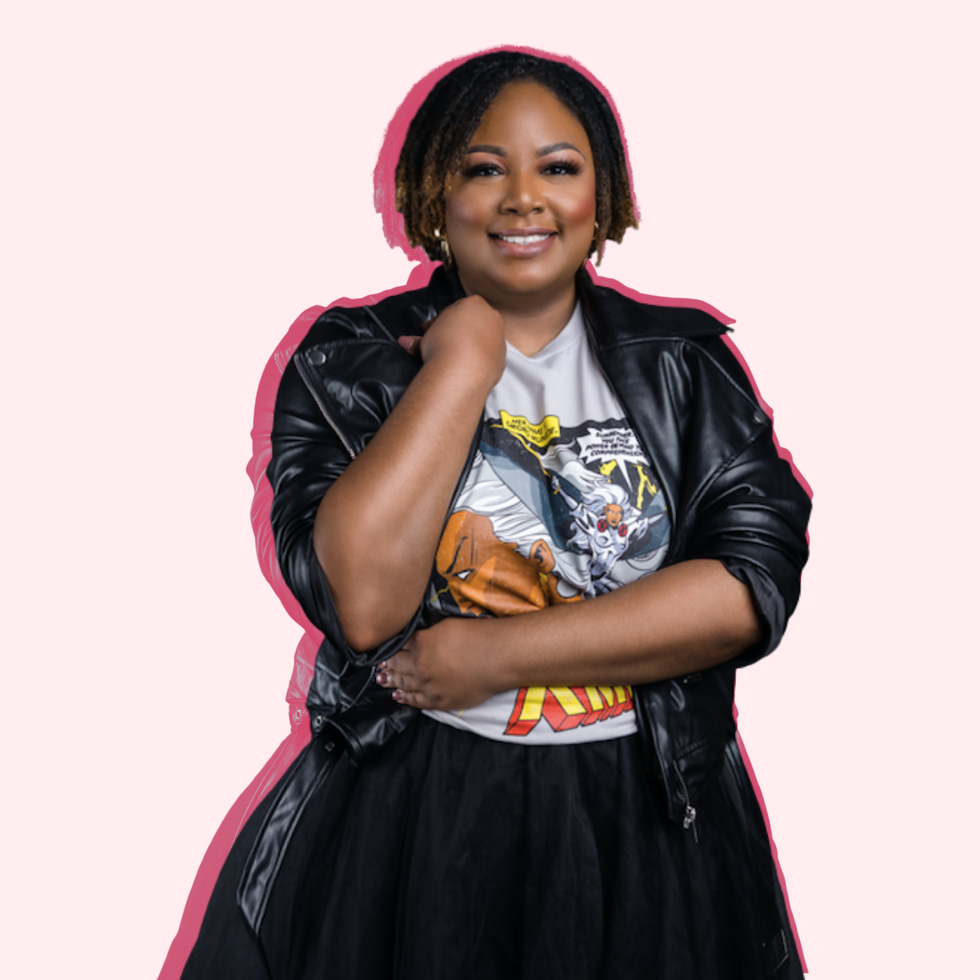
How can anyone in the workplace lead when it comes to DEI?
Leading DEI can be arduous terrain, as it requires sensitivity to myriad issues and reaches far beyond the racial and gender quotas of the 1970s. Inclusion and diversity seem to highlight otherness, a need to present facts rather than people. It can separate employees, rather than engage people in the transformative work of DEI policies. Leaders, in all organizations, must first have the emotional intelligence to recognize the humanity of all employees and respect their personhood. Secondly, leaders must confront their personal biases and while one cannot second-guess every decision, must be able to ask hard questions of themselves about why they and the organization acknowledge the need for a DEI plan. Following this lead, employees will be more apt to acknowledge and accept various perspectives, histories, and shared humanities of those who live and love differently from themselves.
What kind of workplace changes have you seen make the most impact when it comes to DEI?
I've seen two workplace initiatives work extremely well — carefully constructing hiring committees and recruiting employees from dedicated professional organizations.
Hiring committees must be carefully constructed to reflect diverse perspectives. This, of course, does not mean that the one person or color in the office should sit on all the committees. (Frankly, only having one person of color is further proof that you need a strong DEI plan.). Also, hiring committees need to address bias in evaluating experience and career paths. Many times qualified candidates are not considered just because of the schools they attended, or the companies they've worked for, or their research interest which can be an outcome of systemic barriers. Similarly, recognizing that evaluating candidates on cultural fit can reduce the effectiveness of DEI efforts. Sometimes hiring committees can unconsciously choose candidates that fit their own personal comfort zones or familiarity. Not recognizing this practice can result in a lack of diversity, not only in color, ethnicity, and gender but also in thought, background, and perspectives.
Recruiting employees of color from professional organizations is key to finding highly qualified talent who may or may not reach your hiring committee through traditional means — especially if your organization is resistant or suspicious of "inclusion and diversity."
What more can be done right now, especially as more companies return to in-person work?
If the pandemic has taught us anything in terms of race and reconciliation, it has taught us to have meaningful conversations, not only with our colleagues but also with ourselves. Take the initiative to research issues before broaching sensitive subjects so that conversations and discussions are meaningful and don't become history or sociology lessons. Accept frustration and vulnerability. Accept and encourage sincere apologies, not for historical transgressions, but for the implicit biases that you may have not known you held. Most importantly, everyone should lead with empathy and recognize that the last two years have made a significant impact on every aspect of life including our social-emotional health and personal priorities. Encourage everyone to give a measure of grace to themselves as well as their peers. Leaders should take the time to listen, be flexible and think creatively to ensure that everyone has the support and resources to perform effectively. This may look different for everyone, but that is the core of diversity, equity, and inclusion.
Claradith E. Landry, Resident J.E.D.I (Justice, Equity, Diversity And Inclusion) Advisor, Executive And Strategist
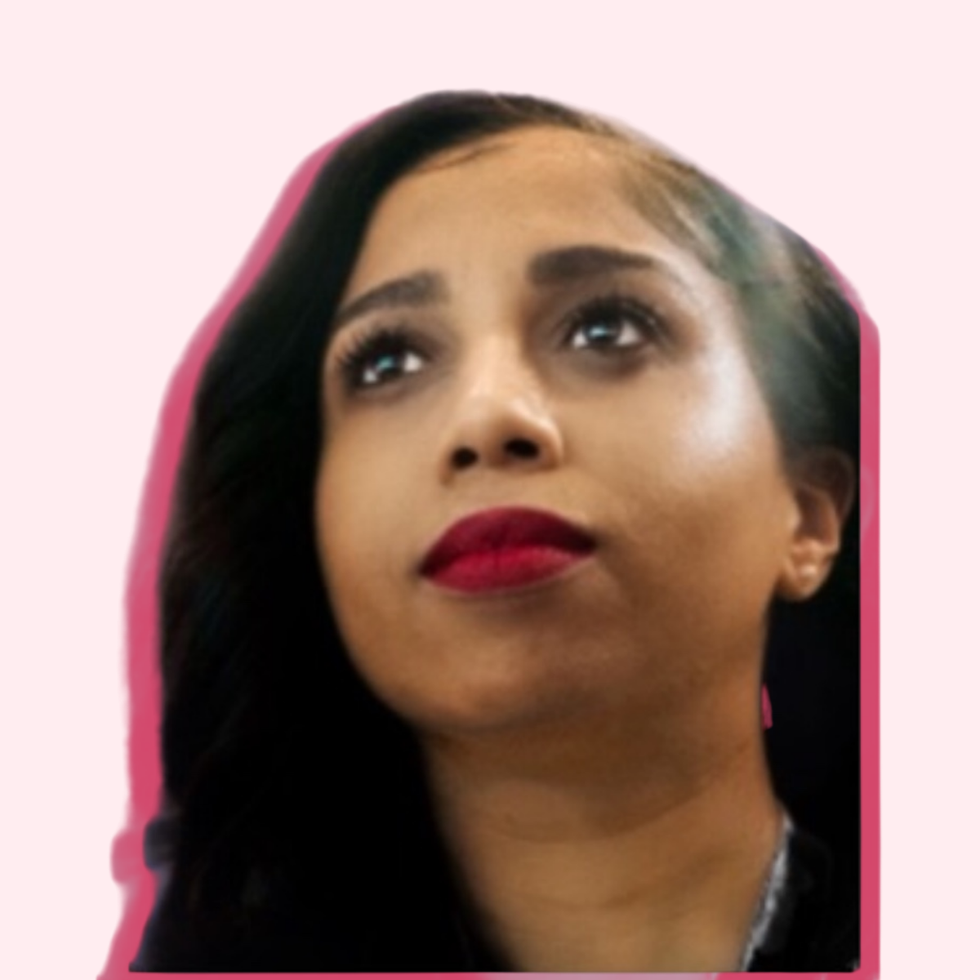
How can we all be better allies when it comes to DEI?
We're all capable of being aware and observant, and it's up to us to be strategic or to capitalize and maximize opportunities when you have a group of people listening to really shape your words and your perspectives in a way that it touches not only their heads, but their hearts, so they can be incentivized and galvanized and even touched to act. I find hope in knowing that we have a group of future leaders that are okay with disruption, that are embracing innovation and don't believe in status quo necessarily, and don't always think that that serves individuals or groups, especially marginalized groups.
What more can be done right now, especially as more companies return to in-person work?
Companies need to have a conversation about what's happened since all of these remote and virtual conversations on diversity and inclusion, these courageous conversations and reflections on oppressive systems and really come back and say, what have you done with the information that our Black and brown communities, our intersectional communities, our LGBTQIA, any marginalized or underrepresented group, what have you done with the information, the transparency in which they shared? How has that changed the way that C-suite leadership looks, acts, behaves, pursues work, has some accountability, other than anecdotal instances of addressing a particular issue. I would like to see some semblance of transparency and accountability internally. I am glad to see more organizations share their diversity numbers externally. But my push and my challenge to a lot of organizations is to move beyond reporting and talk about your engagement status. A lot of these companies are coming on board and they're still stuck. When you talk about the maturation of the DEI journey or strategy, you're still in a reactive mode, right? You're responding to something that's happened that's egregious. And my concern is that in order for us to practice our humanity, something of that magnitude has to happen again.
Tell us about the voter initiative that you're working on.
Our client is really trying to bring attention and some awareness to the almost 400 restrictive voting laws that are being passed across the U.S. and really not just focus on the suppressive bills that are being proposed, but really what's the light at the end of the tunnel with all of this. It's the two pieces of federal legislation, the John Lewis Voting Rights Act and the For the People Act that we're hoping will bring much needed attention to the conversation around equity and voter accessibility in time for the midterm elections in 2022 and beyond.
Just understanding what my family started, their involvement in the Civil Rights movement in the 50s and 60s and what can we do from a policy standpoint and from a company standpoint to make sure that we are encouraging engagement that is nonpartisan, continuing the courageous conversations that affect the way that people experience their local politicians and their elected officials, and just bringing everyone the table to see what we can do to move forward as an organization, as a nation really.
In the last year, we've learned that it has to be an enduring commitment that has shaped and built into the operational model of the organization of the company and that it's part of their long-term strategy, not just a short-term campaign.
What kind of changes have you seen make the most impact working with corporate clients?
There are so many right now. First and foremost, I think it's all about recognition and understanding and awareness about where your organization really is. Talk about levels of systems and how people can really get to that growth edge, and it starts with the individual looking to your left and your right, looking internally, truly being introspective and saying to yourself is the way that I've experienced things and the systems that are in place that allow me to experience life in a certain way, is that afforded to all people? What I've seen work are organizations that are really willing to look themselves in the mirror and determine what is it that they're doing that is working, or is it continuing to perpetuate a system that unwittingly or wittingly, but most times unwittingly, perpetuating systems that are oppressive for marginalized groups.
I appreciate the intent on hiring diverse talent. I truly believe that they need to continue to do that, but also beyond bringing new talent in, really ask themselves what's your plan to advance your existing under-represented talent within your organization. Because if the pipeline isn't diverse and isn't inclusive, then you're doing one-off performative measures that aren't sustainable yet again.
Danielle Grant, Senior Program Manager At Leidos
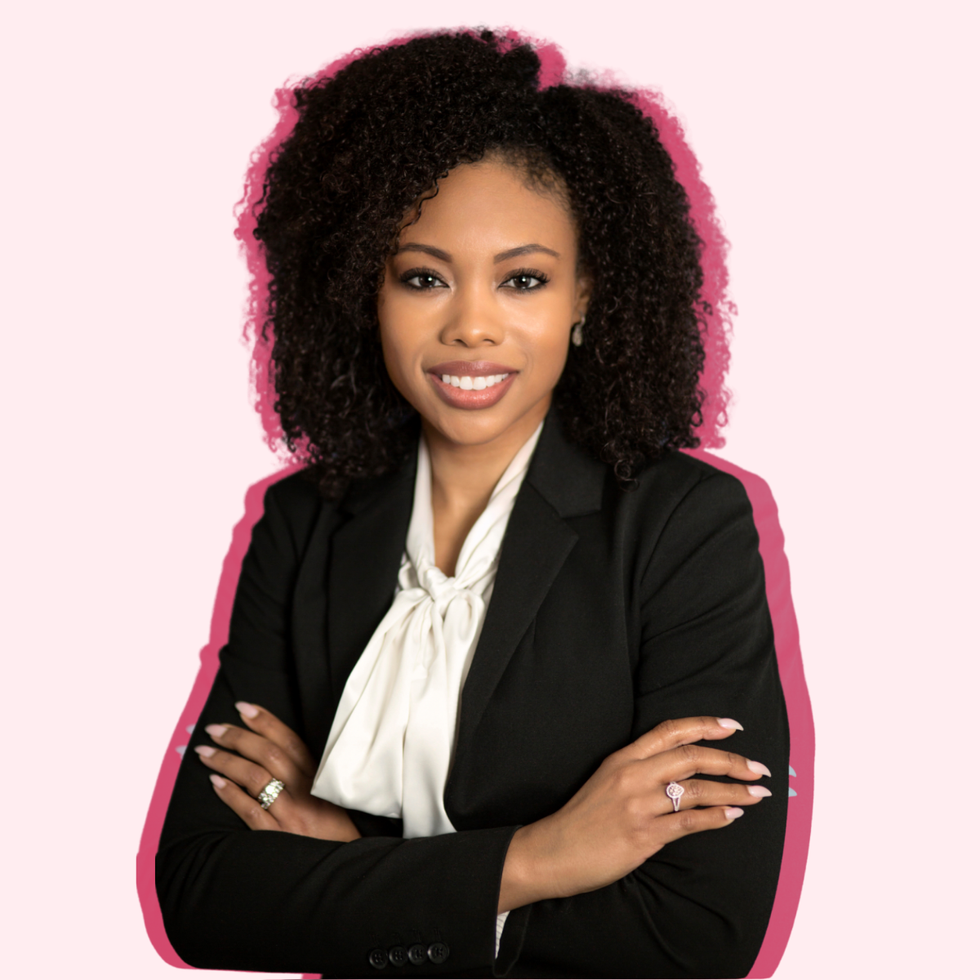
How can anyone in the workplace lead when it comes to DEI?
Leadership can be demonstrated at all levels of an organization. When it comes to DEI leadership we all play a part in ensuring that diversity is included and reflective of those that are the end users and consumers of our products and services. DEI leadership can have a profound effect with the smallest gesture. It can be as simple as ensuring that everyone on the team has an opportunity to be heard, considered, and respectfully responded to. After all, everyone is hired based on the value that they bring and this can be capitalized by giving everyone a voice.
What kind of workplace changes have you seen make the most impact when it comes to DEI?
The approach to a DEI workplace has to be multifaceted in order to truly flow throughout the organization. For DEI to have a chance at succeeding it has to be supported and influenced from the top of the organization, but for it to truly take root all-levels must engage, understand, and comply with leadership expectations. Actively speaking on and addressing DEI issues is a great initial step but charters, actions, and metrics, are needed to help weave in DEI into organizational culture.
What more can be done right now, especially as more companies return to in-person work?
We can all challenge ourself to get involved wherever we can to foster DEI. Whether it's demonstrating inclusive behavior, getting involved in (or starting) an Employee Resource Group, or challenging policies if you have the influence and authority. We are all diverse in some way and, if you haven't already, you may find you
Dr. Brittany Poinson, Child Neurologist

How can anyone lead when it comes to DEI?
Taking ownership of your environment. We are all called to perform at our job at a specific standard. How we treat our colleagues is also our own responsibility; the standard of being a decent human being. We all want to feel like we are a part of something, and that can be challenging when we are all different. We must step outside of our own selves to understand why our colleague requests a safe space to freely pump her breast milk during her lunch break, why she asks you not to touch her hair when it's in a new style, or even ask you to address them as their self identified pronoun. Taking charge of inclusivity requires being cognizant; the work environment will follow what is created.
What kind of changes have you seen make the most impact when it comes to DEI?
Currently, my chairperson of the department allows us to have Cultural Sharing experiences once a month. It can be as simple as someone sharing customs of a Pakistani wedding to the evolution of African American hair. It creates an open and honest dialogue that people would otherwise be hesitant to ask one another. From that, new relationships have been able to be built. I appreciate the willingness and vulnerability that we can have to share where we come from.
What more can be done right now, especially as more companies return to in-person work?
People have gone through a lot since the beginning of 2020. We may have no idea what they've been through to get back to this current moment in time; especially in-person working. Companies love to celebrate their diversity, but they have to recognize how to keep these team members whole and able to work as a collective. When I am respected for being a working mom and the school just closed due to a COVID outbreak, allowing me to work from home keeps me motivated to be the best team member that I can be. Inclusivity is grace that leads to glue. I'll stick it out with you through this symbiotic relationship of success.
Noel Abdur-Rahim, Assurance Partner at PwC
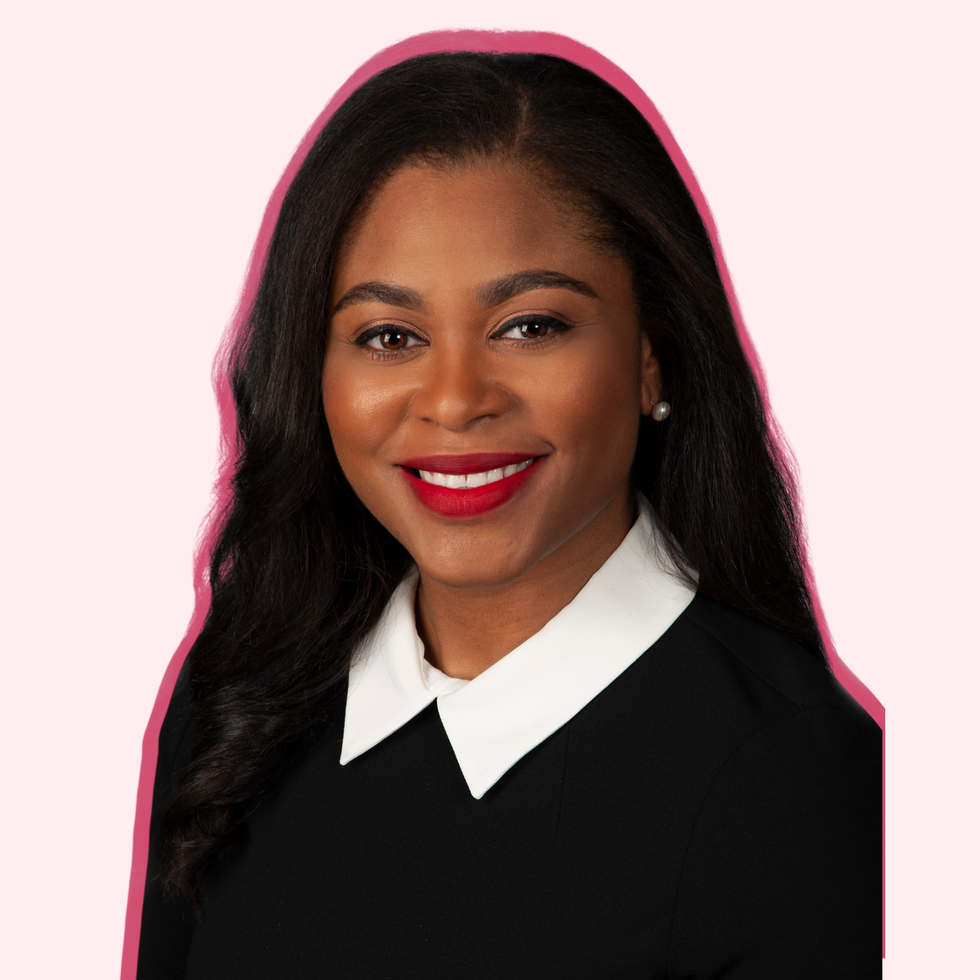
How has the workplace, in your experience, changed over the course of the last year for women and people of color? What kind of changes have had the most impact in leveling the playing field?
I can't speak for anyone else, but based on personal experience, I have felt increased pressure to perform in all areas of my life, while the demand for my expertise — at work and home — has also increased. The most challenging change occurred when my school-age children were required to attend school virtually while I balanced a full work schedule. Many women have made difficult decisions to leave the workforce to homeschool or support their children in other ways. At my firm, I am fortunate enough to own my schedule and plan it in a way that allows me the flexibility to both direct my children with their virtual learning and continue to perform at work. While my experience isn't without its challenges, it is manageable because I have a strong support system in my home and work network.
I believe that flexibility and grace have had the most impact in leveling the playing field. There was a time when a screaming kid, a flying toy, or a barking dog could derail a meeting or embarrass someone. Now it is not only accepted but also understood. We are working in an unprecedented environment. Everyone realizes that. Giving people the grace and space to be imperfect has been critical to my success and those that work with me.
What is your advice for BIPOC women to get ahead in today's workplace?
The circumstances and experiences of women of color in the workplace are complex and nuanced. Even so, I would say to be bold, be courageous, be vulnerable, and (sometimes) be forgiving — even when another person may not deserve it.
What challenges do we still face?
We are all still defining what "normal" is. That's why my challenge to the business community is — that we take off the presumptions and expectations of performing like normal. We should meet people where they are. Everyone's path is different, and we should support people in their unique journeys. As a leader, I'm talking to myself here as well. There is no one size fits all management, working style, or environment. When there are deadlines and customer expectations that we must meet, we have to think differently about bringing the strength of our people, capabilities, and technology to support clients in building trust and delivering outcomes. The path to success should be defined by the person walking it and supported by their leader — with course corrections as needed along the way.
How can we all be better allies in the workplace?
We can become better allies in the workplace with care and empathy. We have to want for others what we would want for ourselves and make it happen. Reflect on potential blind spots and challenge ourselves to think differently by asking questions, reaching out, and advocating for others. Most importantly, we must take action. Passive support is not impactful and is no longer acceptable.
What does leadership look like to you?
To me, leadership means being firm but fair. It is selfless, often calling for action on behalf of others and the greater good. Leadership is doing the right thing even when it can be difficult. A leader may become tired or question themselves, but in the end, their leadership contributes to a more fulfilling life.
Want to meet more inspiring leaders? Check out the virtual Black Women's Leadership Retreat, which will support emerging and executive women leaders through heightened personal and professional self-awareness to broaden leadership impact.



